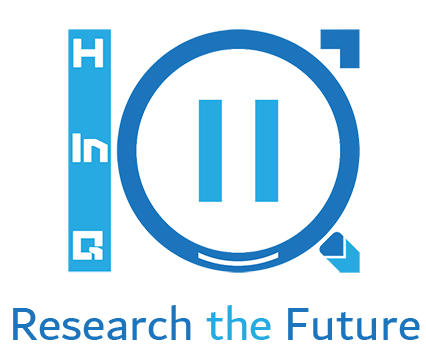Introduction: Market Researchers, Are You Ready for the AI Takeover?
For decades, market research has relied on traditional methods—surveys, focus groups, and structured interviews—to decode consumer behavior. But let’s be honest: these methods are too slow, too expensive, and often too detached from reality. Consumers don’t always say what they mean, and by the time reports are compiled, the market has already moved on.
Enter AI-powered analysis for market research—a game-changer powered by natural language processing (NLP) and predictive analytics. Instead of waiting for structured feedback, NLP listens in real time, decoding emotions and opinions from social media, customer reviews, and conversations. Brands no longer have to ask, “What do you think?”—they can just analyze what’s already being said using AI-driven consumer insights.
This shift is more than just a technological upgrade—it’s a complete redefinition of market research strategies. The big question is: Are market researchers adapting fast enough, or is their expertise becoming obsolete?
The Death of Traditional Market Research: Enter AI-Driven NLP
Market research has always been about understanding consumers—but let’s face it, the old ways don’t work anymore. Surveys and focus groups are slow, expensive, and unreliable. Why? Because they rely on people consciously reporting their opinions, often in artificial settings. The reality is, most consumers don’t articulate their true feelings in a structured questionnaire. They express them organically, through tweets, product reviews, forum discussions, and even emojis.
This is why AI-driven NLP in consumer behavior research is flipping market research on its head. Instead of asking customers what they think, it analyzes what they’re already saying—across social listening platforms, AI chatbots, and customer feedback loops. It captures raw, unfiltered emotions, revealing what traditional methods often miss.
More importantly, AI-powered social listening operates in real time. It doesn’t take months to compile results; machine learning algorithms can instantly assess shifts in consumer mood, brand perception, and competitive trends. That means businesses can react faster, make data-driven decisions sooner, and avoid costly blind spots.
The shift is clear: Market research is no longer about structured responses—it’s about decoding the continuous, unfiltered conversation happening everywhere, using AI sentiment tracking tools.
How NLP is Reshaping the Role of Market Researchers
For years, market researchers have acted as data collectors, survey designers, and focus group moderators. But in the age of big data and predictive analytics in market research, their role is undergoing a dramatic transformation. Instead of spending time crafting questionnaires and analyzing structured responses, researchers now need to interpret unstructured, real-time consumer input—a shift that demands advanced AI tools, NLP capabilities, and a data-driven mindset.
Take brand perception analysis, for example. Traditional tracking studies rely on periodic surveys to measure brand sentiment, but AI-powered consumer NLP tools can now detect shifts in real-time, flagging early warning signs of brand crises or emerging trends.
In customer experience (CX) insights, the impact is even greater. Market researchers no longer have to wait for annual satisfaction surveys; AI-driven feedback analysis can extract frustration, enthusiasm, or confusion directly from customer service interactions, product reviews, and AI-powered chatbot data. This allows brands to fix problems before they escalate, rather than reacting after damage is done.
AI-powered product development also benefits. Instead of relying solely on structured feedback from test panels, companies can analyze organic online discussions to identify features customers crave—or spot weaknesses in competitors’ products. Why ask when you can listen?
Even advertising effectiveness tracking is changing. Forget post-campaign surveys—AI-driven consumer insights can gauge reactions as an Ad runs, measuring emotional responses at scale. The same applies to competitive intelligence: instead of benchmarking through delayed studies, researchers can track how customers feel about competitors in real time using AI-driven sentiment dashboards.
Market researchers who embrace AI for market research will thrive. Those who cling to outdated methods? They risk becoming obsolete in a world where consumer sentiment evolves by the second.
The Hard Truth About NLP (And What Market Researchers Need to Watch Out For)
NLP might sound like the ultimate research tool—fast, scalable, and always on. But let’s not pretend it’s flawless. Like any AI-driven consumer insights method, it comes with pitfalls that market researchers can’t afford to ignore.
For instance, AI still struggles with sentiment context analysis. Sarcasm, irony, and humor can confuse sentiment classification algorithms, leading to false conclusions. A tweet saying, “Wow, this customer service is just AMAZING!” could be misclassified as positive unless the AI is sophisticated enough to recognize sarcasm.
Then there’s the issue of neutral sentiment detection. Not every consumer opinion is purely positive or negative. Some comments are mixed, indifferent, or highly nuanced—and AI isn’t always great at interpreting those gray areas.
Cultural and linguistic biases are another challenge. The same word can have completely different connotations across languages and regions. A sentiment model trained on Western data might misinterpret emotions in Asian or Middle Eastern markets, leading to flawed insights.
And let’s not forget data manipulation in sentiment tracking. NLP relies on online data, but fake reviews, bot-generated opinions, and astroturfing campaigns can distort results. Market researchers need to distinguish real consumer input from noise—a skill that AI alone can’t master yet.
Bottom line? AI-powered consumer NLP isn’t a magic wand. It’s a powerful tool, but market researchers still need to apply critical thinking, contextual understanding, and human expertise to make it truly valuable.
The Future of Market Research: Adapt or Get Left Behind
Market research is no longer about collecting data—it’s about interpreting real-time consumer behavior analytics. The days of waiting weeks for survey responses to trickle in are gone. AI-powered consumer NLP is already making real-time decisions for brands, and market researchers who don’t evolve will find themselves outpaced by competitors who do.
AI-powered customer insights tools are also shifting the role of the researcher. Instead of spending hours manually coding responses or building surveys, market researchers must now focus on storytelling, insight generation, and strategic decision-making.
The takeaway? AI isn’t here to replace market researchers—it’s here to replace the ones who don’t adapt. Those who embrace AI-driven market research strategies will gain a competitive edge.
Conclusion: Market Research Will Never Be the Same – So What’s Your Next Move?
The rise of AI-driven NLP isn’t just another industry trend—it’s a fundamental shift in how we understand consumers.
But here’s the real question: Where does this leave market researchers? Those who see AI as a threat will struggle. Those who see it as a tool will thrive.
For brands looking to integrate AI-powered insights into their business strategy, explore our Custom Market Research Services to leverage sentiment analysis for strategic decision-making. [Custom Market Research Services]
So, what’s your next move? Embrace AI-driven market research or watch from the sidelines as it reshapes the industry without you.
Reference:
- What is Sentiment Analysis? – IBM: Read More!
- How AI is Changing Market Research – Forbes: Read More!
- The Power of NLP in Sentiment Analysis – Google Cloud: Read More!
- Real-Time Social Listening & Sentiment Tools – Sprout Social: Read More!
- Predictive Analytics in Market Research – Harvard Business Review: Read More!



